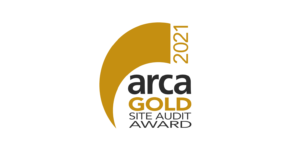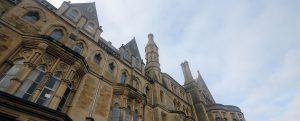What does asbestos look like – is a question often asked by homeowners and building contractors.
Unfortunately, this question is not as straightforward as it sounds. Asbestos can take many different forms. Over the course of the 20th century (and even before then), asbestos was used as a common ingredient in a number of different building materials.
Why was asbestos used?
Asbestos is a mineral that is relatively simple to extract and available in large quantities. This meant is was inexpensive to produce and manufacturers across the world used it in a number of different forms. Asbestos was used because of a number of beneficial properties:
- An excellent insulation material, both for acoustic and thermal properties
- Very strong material when mixed with other ingredients such as cement or plastics
- Almost completely resistant to fire
- Can withstand chemical attack
- Very resistant to harsh weather conditions
Prior to the now-known health implications of using asbestos, its use was widespread. It was used to such an extent, that the legacy left behind is thought to take decades to completely remove.
Things to look for when identifying asbestos
Materials containing asbestos were used in commercial buildings, domestic properties and outbuildings. Asbestos containing materials (ACMs) can be found both inside and on the outside of buildings, with some being more easy to identify than others.
It should be pointed out that although asbestos can be presumed from a visual inspection, its presence can only be confirmed by taking a sample and having it analysed in a laboratory
Asbestos ceased to be used in the UK from 1999. In theory, any building built before this time has the possibility to contain some form of asbestos.
This guide seeks to help people in identifying common asbestos containing materials across the following widely used products, cement, insulation board, plastics, vinyls and resins, textured coatings, sprayed coatings, pipe insulation and loose-fill insulation.
Asbestos Insulation Board (AIB) products
AIB was commonly used in walls, building façades, ceilings, fascias & soffits, fire-proofing, lift shafts and external cladding. AIB is very fibrous when disturbed and can only be removed by a licensed asbestos removal contractor.
AIB was commonly used within internal partitioning in commercial buildings. This is sometimes difficult to visually identify without an intrusive analysis. As such, specialist sampling techniques carried out by qualified surveyors should be used if it is suspected to be present. Another use for AIB was to box in pipes and other heating-related services. AIB can often be found in kitchens, bathrooms and for lining risers penetrating several floors in high-rise buildings. When used as a boxing, it is often difficult to identify visually as often the material has been coated with paint or clad with tiles. AIB was also often used as a wall cladding material, either mechanically fixed or bonded using adhesive.

Ceiling tiles were another product that were often manufactured from AIB. There were a number of different types, however, the most commonly used can be seen below. Sampling and analysis in a laboratory is the only way to determine the presence of asbestos. AIB can also be found as a ceiling finish in standalone and integral garages.

AIB fascia and soffit panels were also widely used, especially in local-authority properties built in the 1960s and 1970s. Like AIB used indoors, it is difficult to visually identify and is often mistaken for cement-based products and other non-asbestos materials.

Façades in older commercial buildings often contained AIB in the form of insulated panels above and / or below glazing units. The AIB was usually found within the panel, sandwiched between an external, often coloured metal cladding and an internal finish. These panels were often used in the construction of schools and other public buildings between the 1950s and 1970s.

Known for its heat-resisting properties, AIB was often used in fire-breaks, including walls and doors, and for protection of structural steel columns. Older fire doors often contained an AIB panel within the leaf and the material was also used as a header to fill the void between the top of the door frame and the ceiling.
Common asbestos cement types
Cement-based products often contained asbestos to improve strength and durability. As such, they were widely used for a number of years and due to the product longevity, can be widely found today. Products include roofing sheets, cladding panels, roof tiles, promenade tiles, fascias & soffits, flues & drainage products and undercloaking. Asbestos cement is a lower-risk product than AIB and does not require a licensed contractor to facilitate removals, however sufficient precautions and training should be in place prior to any disturbance.
The strength of asbestos cement meant it is more commonly found externally, particularly in roofing applications.
One of the most visually identifiable asbestos products is corrugated cement roofing sheets. These were traditionally used in a number of applications including garages, sheds and commercial buildings. Over time these may have been replaced with non-asbestos alternatives, but if they look particularly old then they could be presumed to contain asbestos. Other roofing applications for asbestos include fascias, soffits and undercloaking. All of these were commonly used, however spotting their presence from the ground is often difficult, except in the case of bungalows. If cement-based products are presumed to be present, then samples will need to be taken to positively identify asbestos fibres.

Pre-cast asbestos cement products include flues, downpipes and gutters. These are usually easy to spot and visually identified. Older boilers in both domestic and commercial applications often had asbestos flues so this type of product can be found in many different places.

Asbestos used in vinyls, resins and composites
Because of the added strength, asbestos was once widely used in flooring applications. The two main types of flooring were vinyl tiles and sheet-laid vinyl. Vinyl tiles, often referred to as thermoplastic tiles were used since the end of the second world war until the 1980s. Often hidden beneath other flooring layers, asbestos tiles were commonly used as a builders finish, prior to more decorative finishes being placed over the top. Vinyl tiles were available in a number of different colours and often arranged in patterns if being used as the finished surface.

Some tiles which look similar did not contain asbestos, however a large proportion of them did contain small amounts of asbestos. Due to the nature of the bonding process, the chance of fibre release is relatively low.
Older sheet vinyl was also made with asbestos used as a backing material. This was mostly used as a decorative finish over a similar period to that of asbestos vinyl tiles. Another type of bonded asbestos was that of resins. These were typically found in toilet seats, cisterns and commonly used as window sills.
Asbestos textured coatings (Artex)
Textured coatings containing asbestos were used from the 1960s until the 1980s. Mostly applied to ceilings, the coating was also used to cover walls. A well-known brand of textured coating that did contain asbestos was Artex. This type of finish is often referred to as artex, even if it wasn’t made by that particular manufacturer. The patterns used for textured coatings vary, but popular choices included swirls, bark and circles. Asbestos was used to strengthen the mixture, allowing it to adhere better.

What do asbestos sprayed coatings look like?
Sprayed coatings are not often found in domestic properties. The coating was used as fire-proofing, often applied to steel beams, in between floors, (usually to the underside) and to the underside of roofs. One of the most dangerous forms of asbestos containing material, sprayed coatings contain as much as 85% asbestos fibres and is highly susceptible to damage. If disturbed, it would release large quantities of fibres into the air. The spraying process was often messy and as a result, debris is often found in close proximity.

The image above show what the finish typically looks like. If you suspect a sprayed asbestos coating is present, then do not damage the surface. It is advised that a sample is taken and sent for analysis, but this must be done under controlled conditions by a suitably trained surveyor.
What does asbestos pipe insulation look like?
Asbestos was used to insulate hot water pipes, both in commercial and domestic properties. The insulation was coated to the outside of pipes and often wrapped in a protective coating or painted, making it difficult to identify at first glance. Similar to sprayed coatings, it releases fibres very easily if disturbed and should not be damaged if suspected.

What does asbestos loose insulation look like?
Asbestos loose fill insulation is the most dangerous form and if uncovered should not be disturbed under any circumstances. Made from 100% asbestos fibres, it becomes airborne very easily, even after minor disturbance. The material was used to insulate floors, lofts and wall cavities in both domestic and commercial buildings. The material was also used in the ship-building industry. This form of insulation is often a blue-grey or white in colour. Its appearance is similar to candy floss.

Asbestos Analysis
The only definitive way to determine if asbestos is present, is to take a sample and have it analysed in an accredited laboratory. Taking a sample should only be done by a suitably qualified person in order to mitigate potential fibre release. Merryhill is able to take samples and have them analysed on your behalf at an independent third party laboratory. Merryhill can also provide advice and consultancy, helping you manage any materials present and maintain your asbestos register. Get in contact for more details.





